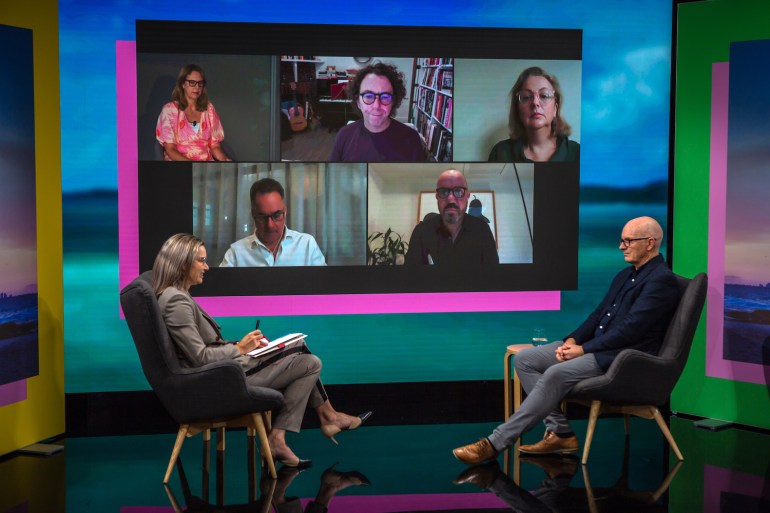Both Screen Producers Australia (SPA) and the Australian Directors’ Guild (ADG) have identified the potential for a “production void” if there is a prolonged delay between the government’s relaxation of local content quotas for commercial free-to-air broadcasters and any imposition of obligations on streamers.
Discussing the government’s reform agenda on a panel at Screen Forever earlier this week with other industry leaders, ADG executive director Alaric McAusland said: “One of the biggest challenges we see is the gap between deregulating commercial networks and regulating SVODs, and the creation of a production void of the magnitude of which we’re not clear on.”
SPA president and Wildbear Entertainment CEO Michael Tear agreed, stating it could lead to a lack of destabilising lack continuity for production companies.
“It takes a long time to paper deals. You need certainty going forward. The sooner we can lock that in, the better. Then the industry can adapt to the new environment.”
Seven, Nine and 10 have been under new quota obligations since January 1, which allow them to meet their annual first-release requirement through any combination of genres across drama, children’s and documentary.
From this year, SVODs must to report their Australian acquisitions to the Australian Communications and Media Authority (ACMA) for the first time.
However, the government floated in a green paper in December that SVODs and AVODs be required to invest a percentage of their revenue on Australian content in the form of commissions, co-productions and acquisitions. It is seeking submissions on the paper until May 23.
Tear was optimistic the government would ultimately force global SVODs like Netflix and Amazon to make a mandated contribution to Australian content, though urged it must be done sooner rather than later.
“There’s a lot of devil in the detail, but I’m making the assumption that that will happen. That in line with the 30 per cent offset will be broadly additive to the to the sector,” he said.
“In some ways, it’s also taking the sector into areas where the audiences want to watch the content. That’s particularly important. People want to watch drama on SVOD services. They want to binge it. They don’t want to be tied to a schedule. This sort of mechanism that’s being proposed is a way that our content can follow the audiences onto the platforms that they want to watch this content on.”
ACMA authority member Fiona Cameron urged industry delegates to consider at what percentage of revenue streamers be required to invest in Australian content, and exactly how that money was then to be spent.
“At 5 per cent, which has been flagged, if you’re a streamer with $500 million dollars revenue, that’s about $25 million dollars – recognising that commercial free-to-air television on average spends about $130 million in this space,” she said.
“What is it that we want streamers to invest in at 5 per cent? Is it everything including library and including reality, or is it specifically Australian programs? How do you define Australian programs? There are different definitions in the Australian Content Standard than the Tax Act, so those things need to be looked at as well. The devil really is in the detail here. What is it you want the streams to spend money on? Spell it out. How will we get that result?”
Tear said 5 per cent was too small a percentage, noting SPA’s expectation is that the obligation placed on SVODs be around 20 per cent of annual revenue.
Screen Queensland CEO Kylie Munnich agreed, saying 5 per cent was “far too polite a number”.
“If you’re going to put regulation in place, it’s got to stimulate, not stifle the industry. I think we need to be far more ambitious with that target,” she said.
During the same session, McAusland repeatedly hit out at the government’s proposal to harmonise the film and TV Producer Offsets at 30 per cent.
As a result of the 10 per cent reduction for features, McAusland predicted there would be a need for more direct funding support from Screen Australia, and that some films would fail to get financed at all.
In his view, the Producer Offset as it stands now has allowed a “breeding ground for innovation, new faces and new talent” and he said any reduction or change to it and the QAPE threshold would be “effectively killing that”.
“Since 2007, we’ve had a very strong, reliable, well-accepted rebate that was well used here and internationally. It delivered on its objective of keeping Australian talent here, of attracting foreign investment, of attracting private investment within Australia, and less reliance on direct funding from Screen Australia.
“For the life of me I can’t see why we can’t continue with the rebate at the current level where that’s proven extraordinarily successful. When it is a fraction – 2 per cent – of the incentives that we’re providing to international studios to come down here and shoot. Great though they are for international crew capability and talent on screen – and they should be supported and ongoing – it won’t last forever.
“The relativity of our safety versus other international jurisdictions will correct itself. As will the international facing rebates and the relativity of our exchange rate. Our challenge is to make sure that there’s capacity to tell Australian stories when that boom ends. All of this suggests that’s going to be an increased challenge.”


